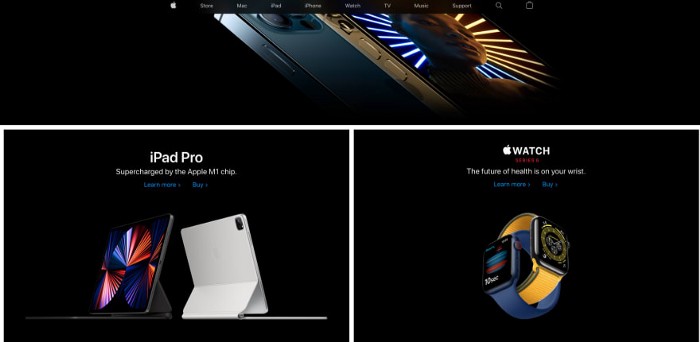Why clone websites?
Frontend development has everything to try to to with the client side. Everything the user can see and interact with on their applications programme.
Studies show that if an internet site doesn’t load within 2 seconds, users bounce. That being said, design has even as much importance as all the frontend programming happening within the background. After all, developers are tasked to implement knowledgeable design into a working website all the time. It’s significantly a vital piece of a frontend developers arsenal. Get good at it!
What is the final word goal?
Master this frontend skill, by cloning these websites as near identical as possible.
Try to incorporate functionality, like modals and drop downs. Include responsive design, like mobile navigation, and grids.
All websites listed below are similar, but just different enough to force different design concepts. for instance, majority of those websites have:
- Large homepage banners
- Big block designs
- Reversed grid columns
- Full or page menus
- Sticky or absolute positioned navigations
- Galleries
- Dropdown / accordions
- Minor animations like fade, or type effects
- Two grid columns
- Responsive design and more!
1. Netflix

When logged in Netflix is a pretty simple design. Horizontal rows, galleries, with a big featured banner.
2. Hulu

Just like Netflix, the logged in experience in Hulu is pretty similar. Has a large featured banner, and basically rows of movies or tv shows with every few rows having a featured section.
3. Apple

You’ll know what I mean by “big block” design. Apple does this well. It’s clean, intuitive and pretty straight forward. If you break everything down into smaller components, you’ll see how easy it would be to implement the design.
4. Airbnb

Airbnb is such a beautiful website! The assets are amazing. Break this design down into smaller components, and you’ll see how it’s just a bunch of big rows and small rows. Blocks either spanning multiple columns, or the entire row.
5. Salesforce

Another great website to polish your css skills. A mix of banners, rows, columns, reverse columns, big box design, but also has featured list, multiple call to actions, and fun images.
7. Razer

A mix of a large home banner, full page featured sections, and big box design. Have fun with this sick color scheme!
6. NVIDIA

Another easy, but professional looking design. Just a banner, grid layout, and rows.
9. Adobe

Another big box design. But also features some cool background gradients.
8. SpaceX

Super easy design. SpaceX is basically multiple fullscreen images with fade up content and a link section.
10. Microsoft

Features a modal, big banners, multiple featured sections, big call to action. Pretty straight forward, but professional looking design.
Conclusion!
That’s a wrap on “Master Frontend Development By Cloning These Websites ” i actually believe cloning one or multiple of this website, will drastically improve your CSS. There’s plenty of analytical thinking that comes with cloning websites, as you break down designs from larger to smaller components. And you furthermore may must consider the simplest tools as you approach new problems. Then there’s responsive design. A mobile or desktop first approach? as an example, does one think Microsoft.com should prioritize the desktop or mobile experience? If it absolutely was up to me, I’d wish to think the majority wait till they’ll access a desktop to form very large purchases like desktops and laptops. Therefore I’d probably prioritize the desktop. this can be a giant a part of a Frontend Developers’ job! Whether you’re freelancing or working for an organization. Designs are either up to you or by professional designers. Master this a part of Frontend Development!








